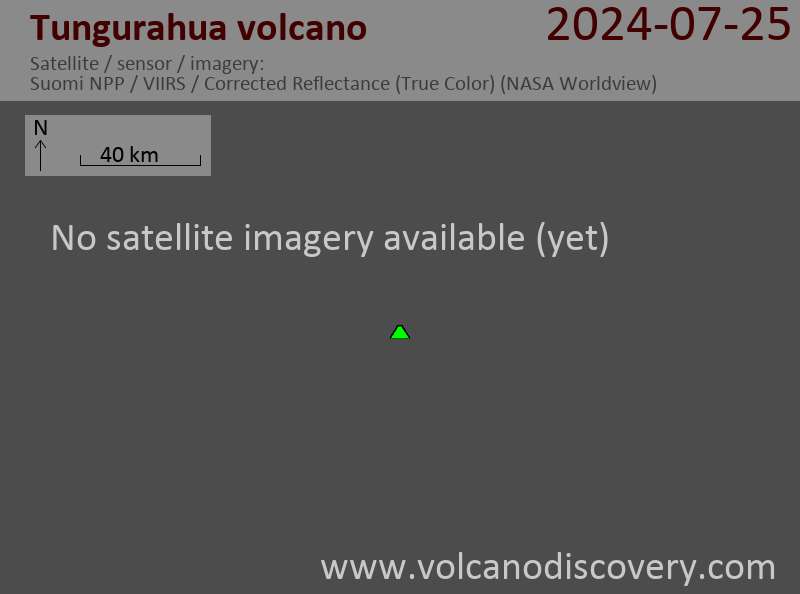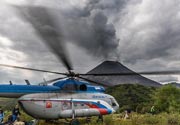Tungurahua Volcano
Updated: Apr 28, 2024 15:46 GMT -
Stratovolcano 5023 m (16,479 ft)
Ecuador, -1.47°S / -78.44°W
Current status: normal or dormant (1 out of 5)
Ecuador, -1.47°S / -78.44°W
Current status: normal or dormant (1 out of 5)
Last update: 12 Oct 2023 (Smithsonian / USGS Weekly Volcanic Activity Report)
Tungurahua is one of South America's most active volcanoes. Since 2000, a new lava dome has been growing in its summit crater. Tungurahua's activity has been characterized by frequent powerful ash explosions, producing ash plumes of several kilometers height as well as dangerous pyroclastic flows. Part of the population around its base has been evacuated.
[smaller] [larger]
Tungurahua volcano eruptions: 1534, 1557, 1640(?), 1641, 1644(?), 1646(?), 1757(?), 1773, 1776, 1777(?), 1781(?), 1857, 1885(?), 1886-88, 1900(?), 1916-25, 1944, 2000 - 2016, 2017 (?)
Latest nearby earthquakes
| Time | Mag. / Depth | Distance / Location | |||
Background
The steep-sided andesitic-dacitic stratovolcano towers more than 3 km above its northern base and consists of three major volcanic edifices sequentially constructed since about 100,000 years ago over a basement of metamorphic rocks.Tungurahua II was built within the past 14,000 years following the collapse of the initial edifice. Tungurahua II itself collapsed about 3000 years ago and produced a large debris-avalanche deposit and a horseshoe-shaped caldera open to the west, inside which the modern glacier-capped stratovolcano (Tungurahua III) was constructed.
Historical eruptions have all originated from the summit crater. They have been accompanied by strong explosions and sometimes by pyroclastic flows and lava flows that reached populated areas at the volcano's base. Prior to a long-term eruption beginning in 1995 that caused the temporary evacuation of the city of Baños at the foot of the volcano, the last major eruption had occurred from 1916 to 1918, although minor activity continued until 1925.
Tungurahua Volcano Photos

Tungurahua, Ecuador. October, 2012 (path of pyroclastic flows on into valley toward village of Pondoa). (Photo: volcanomike)

Tungurahua, Ecuador. October, 2012 (path of pyroclastic flows on right flank). (Photo: volcanomike)

Tungurahua, Ecuador. October, 2012 (path of pyroclastic flows on right flank). (Photo: volcanomike)
















